One of the most popular ways to customize a repeater kit is by choosing particular kinds of outside and inside antennas. All of the kits we offer have been carefully curated to make sure they work together well and offer support for most common signal problems. This guide aims to help you figure out your own circumstances, and what you need to look for in a kit. If you have a particularly unique or challenging signal problem, you can also try customizing your kit further.

Outside Antennas
There are two types of outside antenna to choose from:
 Omnidirectional antennas receive and send signals in a 360º radius. They can receive signals from multiple cell towers and are best for boosting signal on many different carriers. They are excellent in most situations where the existing outside signal strength is moderate to strong. If the outside signal is weaker than that, you may need the directional yagi antenna instead. (We have a guide to testing your outside signal strength.)
Omnidirectional antennas receive and send signals in a 360º radius. They can receive signals from multiple cell towers and are best for boosting signal on many different carriers. They are excellent in most situations where the existing outside signal strength is moderate to strong. If the outside signal is weaker than that, you may need the directional yagi antenna instead. (We have a guide to testing your outside signal strength.)
The power of an omni antenna is measured by its “gain”. Gain means the strength and reach of the antenna’s signal. An antenna with high gain will receive a more powerful signal from the cell phone towers.
An omni antenna is a good choice if you have moderate to strong existing outside signal, and you want to boost signal across multiple carriers.
 Yagi antennas are powerful directional antennas. A yagi antenna needs to be set up pointing in the direction of the cell tower, and because it is directional it will only pick up signal in that direction. Like an omni antenna, the power of the yagi antenna is measured by its “gain”.
Yagi antennas are powerful directional antennas. A yagi antenna needs to be set up pointing in the direction of the cell tower, and because it is directional it will only pick up signal in that direction. Like an omni antenna, the power of the yagi antenna is measured by its “gain”.
It’s very powerful at picking up weak signal in one particular direction, and we recommend it for situations where existing outside signal is weak, and you only want to boost coverage for one carrier (or if more than one carrier has a cell tower in that direction).
If you need to boost signal coming from different directions, it is possible to set up more than one yagi antenna. The antennas would need to be placed at least 10ft apart and must not be pointing towards each other to avoid creating oscillation (feedback). The multiple antennas are then connected to the amplifier inside using a signal splitter. Contact us for more help with this.
Inside Antennas
The range of the inside antenna is dependent on three factors:
- physical obstructions
- power generated by the booster
- reception from outside signal received and distributed by the outside antenna.
There are two types of indoor antenna to choose from:
 Omni-directional dome antennas broadcast and receive signals from all sides. They are designed for central locations with 360º coverage. Like outdoor antennas, their power is measured by their “gain”. They need to be mounted to the ceiling for best results. They offer coverage across one floor and are not suitable for covering multiple floors.
Omni-directional dome antennas broadcast and receive signals from all sides. They are designed for central locations with 360º coverage. Like outdoor antennas, their power is measured by their “gain”. They need to be mounted to the ceiling for best results. They offer coverage across one floor and are not suitable for covering multiple floors.
 Panel antennas are directional antennas. Panel antennas allow optimum reception to targeted areas. Like with outdoor antennas, a directional antenna is stronger than an omnidirectional antenna which means the signals it broadcasts are stronger. It can be mounted to either the wall or ceiling. We usually recommend placing it on the ceiling for maximum coverage but in some spaces (like a long narrow hallway) the panel antenna can be placed on the wall.
Panel antennas are directional antennas. Panel antennas allow optimum reception to targeted areas. Like with outdoor antennas, a directional antenna is stronger than an omnidirectional antenna which means the signals it broadcasts are stronger. It can be mounted to either the wall or ceiling. We usually recommend placing it on the ceiling for maximum coverage but in some spaces (like a long narrow hallway) the panel antenna can be placed on the wall.
Antenna Placement
Outside antennas should be placed as high up as possible, in the area receiving the best possible signal (see our site survey guide to help you figure out where that is in your building). A yagi directional antenna will need to be pointed in the direction of the nearest cell tower. It is important that you are not in contact with the directional antenna when taking a signal strength reading. When you hold or touch an antenna with exposed metal surfaces, your body distorts the signal and interferes with the antenna’s performance. Contacting the antenna can produce inaccurate readings, which can lead to less than optimal yagi antenna positioning and reduced performance from your amplifier kit.
Outside antennas need to be very securely attached - they’re going to be exposed to a lot of weather out there! They can be attached to a roof, a wall, or a pole. Most kits include attachments, and we sell a range of compatible mounting hardware if what you need isn’t already included.
Inside antenna placement depends on the layout of your building and the area you want covered. If you just want to improve signal in one room, like a home office, the best place for the antenna is in the middle of the ceiling. If you want the improved signal to penetrate multiple floors, you will need a directional antenna. Again, the best place for the antenna is attached to a ceiling in the centre of the area you want to be covered. As mentioned above, in some unusual room layouts it may be best to place a directional panel antenna on, for example, the wall of a long narrow corridor.
Depending on the existing signal strength and the building materials in your floors and walls, one indoor antenna may not offer enough coverage. You may want to get additional antennas and splitters to increase coverage across multiple floors and large buildings.
When placing your antennas, it’s important to consider the distance between the outside and inside antennas. A cellular booster system works best with a greater distance between the two antennas. If they are too close together, it can create oscillation, or “feedback”. Feedback is when the outside antenna picks up the signal from the inside antenna, and attempts to feed it back into the system. It’s like bringing a microphone too close to a speaker! Oscillation won’t damage your amplifier - the amplifier has a built-in protection against it, and will just switch off. You want to make sure the inside antenna is far enough away from the outside antenna so that the system has room to work effectively.
The total separation required for each booster kit depends on the dB gain of the amplifier in question. The installation guide and instruction manual, available on every kit product page, will describe what is needed.

Don’t go overboard, though! While distance between the two antennas helps the system to work at its best, after a certain point, there’s a trade-off in signal loss. All cables have signal loss, and the longer the cable you need to connect the antennas to the amplifier, the greater the signal loss will be. All our kits include specially selected low-loss cable and some kits can improve this further by upgrading cabling. When placing antennas, consider drilling through walls and floors to reduce the length of cable needed and improve performance.
One final antenna accessory we always recommend is a good lightning surge protector. Your outside antenna is positioned high on your building, made of metal and exposed to the elements - very attractive to lightning! We recommend using a surge protector between the outside antenna and the amplifier unit to protect it.
Every building is different and if you have any questions or concerns about which option is best for your situation, please just contact us at 1-800-761-3041, we’re always happy to give advice.























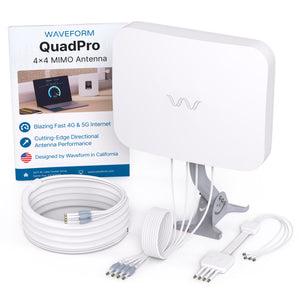
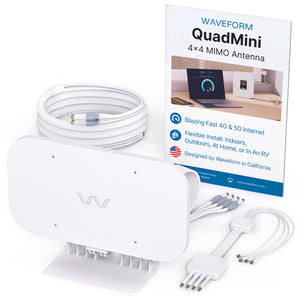
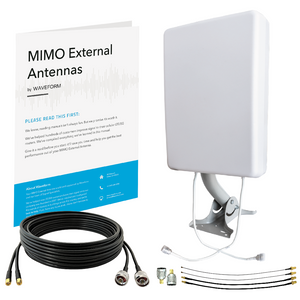
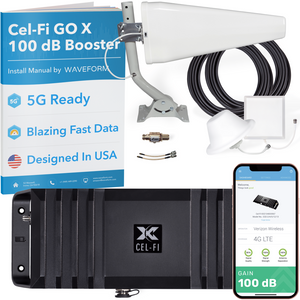
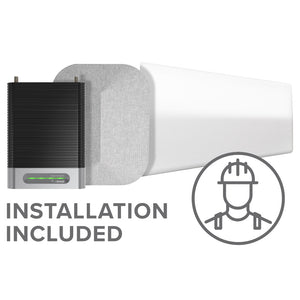
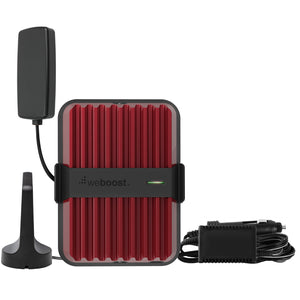





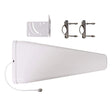
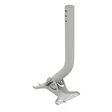
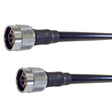
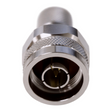
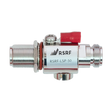
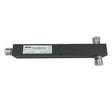
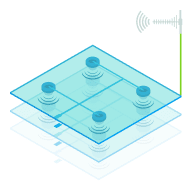

 Omnidirectional antennas receive and send signals in a 360º radius. They can receive signals from multiple cell towers and are best for boosting signal on many different carriers. They are excellent in most situations where the existing outside signal strength is moderate to strong. If the outside signal is weaker than that, you may need the directional yagi antenna instead. (We have a
Omnidirectional antennas receive and send signals in a 360º radius. They can receive signals from multiple cell towers and are best for boosting signal on many different carriers. They are excellent in most situations where the existing outside signal strength is moderate to strong. If the outside signal is weaker than that, you may need the directional yagi antenna instead. (We have a  Yagi antennas are powerful directional antennas. A yagi antenna needs to be set up pointing in the direction of the cell tower, and because it is directional it will only pick up signal in that direction. Like an omni antenna, the power of the yagi antenna is measured by its “gain”.
Yagi antennas are powerful directional antennas. A yagi antenna needs to be set up pointing in the direction of the cell tower, and because it is directional it will only pick up signal in that direction. Like an omni antenna, the power of the yagi antenna is measured by its “gain”. Omni-directional dome antennas broadcast and receive signals from all sides. They are designed for central locations with 360º coverage. Like outdoor antennas, their power is measured by their “gain”. They need to be mounted to the ceiling for best results. They offer coverage across one floor and are not suitable for covering multiple floors.
Omni-directional dome antennas broadcast and receive signals from all sides. They are designed for central locations with 360º coverage. Like outdoor antennas, their power is measured by their “gain”. They need to be mounted to the ceiling for best results. They offer coverage across one floor and are not suitable for covering multiple floors. Panel antennas are directional antennas. Panel antennas allow optimum reception to targeted areas. Like with outdoor antennas, a directional antenna is stronger than an omnidirectional antenna which means the signals it broadcasts are stronger. It can be mounted to either the wall or ceiling. We usually recommend placing it on the ceiling for maximum coverage but in some spaces (like a long narrow hallway) the panel antenna can be placed on the wall.
Panel antennas are directional antennas. Panel antennas allow optimum reception to targeted areas. Like with outdoor antennas, a directional antenna is stronger than an omnidirectional antenna which means the signals it broadcasts are stronger. It can be mounted to either the wall or ceiling. We usually recommend placing it on the ceiling for maximum coverage but in some spaces (like a long narrow hallway) the panel antenna can be placed on the wall.